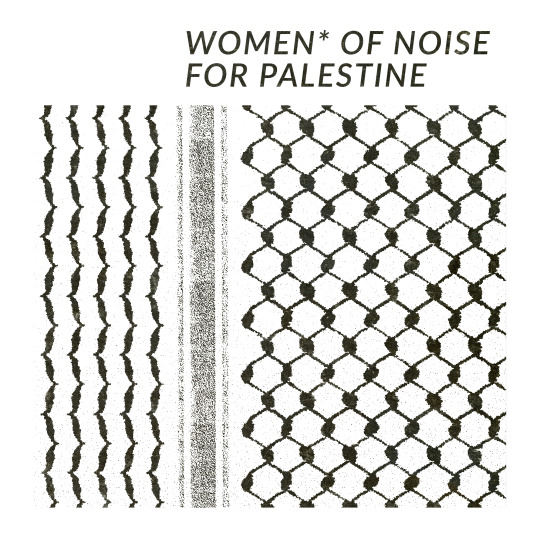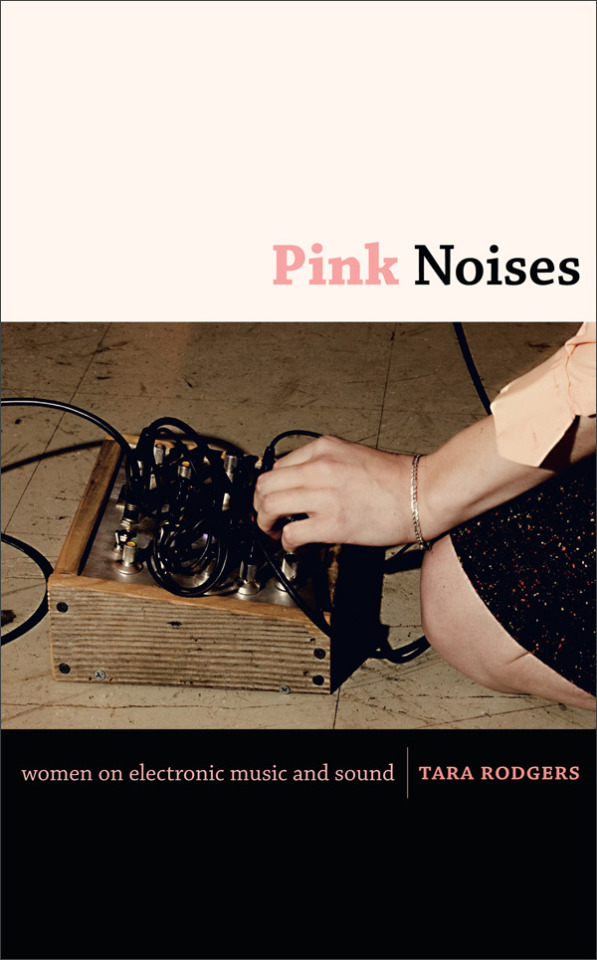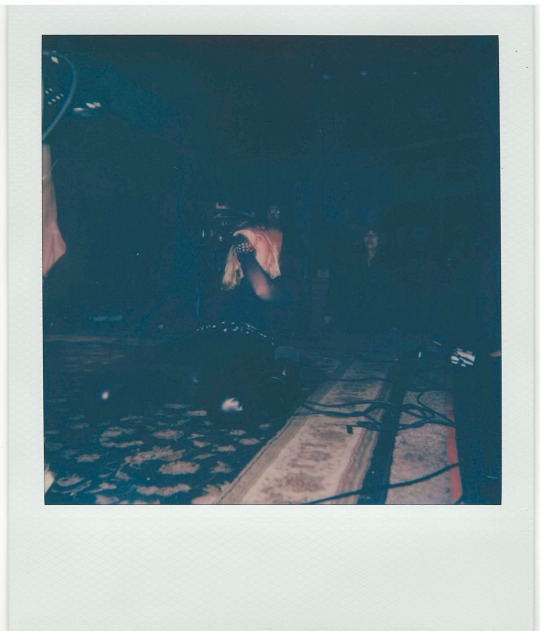#womens electronics
Explore tagged Tumblr posts
Text

arca & kelela, 2014
#arca#kelela#alejandra ghersi#arca1000000#aesthetic#women in music#experimental#electronic#transgender#<3#comfort#my girlies#finds
2K notes
·
View notes
Text

WOMEN OF NOISE FOR PALESTINE
41 tracks from great experimental artists. All proceeds will be donated to the Palestinian Children's Relief Fund. Listen and purchase HERE:
As always, thank you for your support!
#women of noise#noise#industrial#experimental music#power electronics#harsh noise#palestine#free palestine#compilations#Bandcamp
4K notes
·
View notes
Text

Lucia - KMFDM
#Lucia#ebm#kmfdm#electro#electronique#electronic#canada#dark ebm#ebm music#industrial ebm#electronics#electronic band#electronic music#funk metal#techno#women in music#2000s nostalgia#2000s aesthetic#2000s#2000s scene#2000s music
278 notes
·
View notes
Text
heard u freaky shits like tranny noise
⚠️!!VOLUME WARNING!!⚠️
more on bandcamp
#MY NEIGHBOURS LOVE ME#noise#harsh noise#industrial#power electronics#bass#bass guitar#thunderbird#thunderbird bass#tbird#tgirl#trans girl#trans#transgender#tgirl tummy tuesday#girls like us#dyke#butch#lesbian#goth#goth girl#punk#punk girl#women of noise#women in noise#tranny#baeddel#bit naph
244 notes
·
View notes
Text

Delia Derbyshire (May 5th 1937 - July 3rd 2001)
Delia Derbyshire composes using multiple reel-to-reel tape machines in June 1965
source: bbc © 📸: ???
140 notes
·
View notes
Text


Bebe Barron (June 16, 1925 – April 20, 2008)
Barron was a pioneer of electronic music. Along with her husband, she composed the first electronic score for a commercial movie for Forbidden Planet (1956).
#female musicians#bebe barron#music#music history#musicians#electronic music#women in music#historical women#women of noise#women musicians#history#feminist history
184 notes
·
View notes
Text

Pink Noises: Women on Electronic Music and Sound by Tara Rodgers
Get it from my Google Drive HERE
Pink Noises brings together twenty-four interviews with women in electronic music and sound cultures, including club and radio DJs, remixers, composers, improvisers, instrument builders, and installation and performance artists. The collection is an extension of Pinknoises.com, the critically-acclaimed website founded by musician and scholar Tara Rodgers in 2000 to promote women in electronic music and make information about music production more accessible to women and girls. That site featured interviews that Rodgers conducted with women artists, exploring their personal histories, their creative methods, and the roles of gender in their work. This book offers new and lengthier interviews, a critical introduction, and resources for further research and technological engagement.
Contemporary electronic music practices are illuminated through the stories of women artists of different generations and cultural backgrounds. They include the creators of ambient soundscapes, “performance novels,” sound sculptures, and custom software, as well as the developer of the Deep Listening philosophy and the founders of the Liquid Sound Lounge radio show and the monthly Basement Bhangra parties in New York. These and many other artists open up about topics such as their conflicted relationships to formal music training and mainstream media representations of women in electronic music. They discuss using sound to work creatively with structures of time and space, and voice and language; challenge distinctions of nature and culture; question norms of technological practice; and balance their needs for productive solitude with collaboration and community. Whether designing and building modular synthesizers with analog circuits or performing with a wearable apparatus that translates muscle movements into electronic sound, these artists expand notions of who and what counts in matters of invention, production, and noisemaking. Pink Noises is a powerful testimony to the presence and vitality of women in electronic music cultures, and to the relevance of sound to feminist concerns.
Interviewees: Maria Chavez, Beth Coleman (M. Singe), Antye Greie (AGF), Jeannie Hopper, Bevin Kelley (Blevin Blectum), Christina Kubisch, Le Tigre, Annea Lockwood, Giulia Loli (DJ Mutamassik), Rekha Malhotra (DJ Rekha), Riz Maslen (Neotropic), Kaffe Matthews, Susan Morabito, Ikue Mori, Pauline Oliveros, Pamela Z, Chantal Passamonte (Mira Calix), Maggi Payne, Eliane Radigue, Jessica Rylan, Carla Scaletti, Laetitia Sonami, Bev Stanton (Arthur Loves Plastic), Keiko Uenishi (o.blaat)
#book#tara rodgers#annea lockwood#pamela z#le tigre#ikue mori#Pauline Oliveros#Pink Noises: Women on Electronic Music and Sound
547 notes
·
View notes
Text
I made a community for singers/songwriters/musicmakers of any kind to showcase their stuff and things of that nature, reblog this if you wanna join or DM me and I'll send an invite :)
#new music#indie music#musician#alternative music#ambient music#club music#electronic music#experimental music#independent music#lgbt music#women in music#queer music#music production#music producer#my music#music artists#small artist#community
63 notes
·
View notes
Text
Misa Explains 1: Spintronics in a nutshell
A series of posts where I will explain bits and pieces of physics I have gathered throughout the my foray into this wonderful science. Warning, these will be long.
Highly inspired by @chemblrish and @minmin-vs-physics 's posts on their fields, check out their posts (linked on this post in various places!)
Wait what even is going on?
Okay, first of all, why are we even talking about spintronics, whatever that means? Now, we live in an age where we need devices, right? Phones, TVs, laptops, name it. All digital devices come under electronics, which is a cluster of what we call "logic devices" (verrry loosely speaking) with various functions, made with expert circuitry to create our sophisticated "smart" devices. Whew. That's a lot of words. But what does it mean? It means that the very device you're using to view this post is made up of very tiny mini devices, which are made to utilize electrical signals (current, flow of electrons) to make it store information, read information, or perform logic tasks ("AND", "OR" "NOT" and the rest. Let me know if you want me to explain those, but this is not the point of the post so I'm letting them hang in the air for now).
We store digital information in the form of 'bits' (I swear all of this is relevant, please be patient) which is a computer's language of storing and using information. If you've watched any show involving hacking, you'll see stacks after stacks of "1"s and "0"s on their high contrast screens in that radioactive green font (general older sister advice: don't use high contrast it hurts your eyes), these are bits and the basis on which logic devices work. Each combination of 1s and 0s makes a different information, which is the backbone of computing. Now, how these devices make 1s and 0s is again a whole course on electronics, so I will skip over it to just preface that they exist and that's how we make digital devices.
All these years, we have used semiconductors, which allow moderate amount of current flow from them (in contrast to conductors, which allow free flow of electrons, and insulators, which do not allow flow of electrons) to make transistors, which are currently the building blocks of circuit-making devices.

[here's a picture containing ICs (the bug-like looking thing covered in wires) which have tiny transistors inside them, and the LEDs, on which the lit ones are "1"s and unlit ones are "0"s. This was my project for one of my courses!]
In electronics, a very famous law called Moore's Law, states that for increase in tech and development, the amount of transistors in integrated circuits (IC) doubles every two years. This moves proportionally with the increase in use of semiconductors, because transistors are made using them.
Every device maker's main goal is to make a device faster, smoother, and more functional. Which means, more transistors, better semiconductors. Moreover, the smaller space occupied by the ICs, the better. But obviously there's a limit to how much we can decrease the size of the transistors. One is the technical issue of creating such a small object, which will require highly precise instruments which we are not in possession of/ not feasible in the long run. The second issue is the working. "Will a semiconductor keep it's properties when they layer is so small?" is a valid question to ask when we go further down in scale. In simple words: in the long run, improving semiconductors for transistors will be difficult. Moore's law plateaus, and the number of transistors doesn't double with two years. What now? We can't just stop developing better computing devices, not just smart devices, astronomy, medicine and other scientific areas also require reliable, stable and fast computing devices.
Which means we desperately need new materials (and techniques) for logic and memory devices.
Hold on, when's spintronics going to start?
Okay background information done. Now we move onto spins and why we use it. We know that atoms are made of protons, electrons and neutrons. Out of these, electrons "revolve" in "orbits" around the nucleus, which holds the protons and neutrons. I put "revolve" and "orbits" in quotes because essentially it's a cloud of probabilities and we have no clue what path it truly takes. Electrons reside in what are called 'orbitals', which are balloon-like spaces which have a high probability of the electrons being present in (@/chemblrish explains orbitals better here).
Now along with the "revolution", electrons also considered to have a "spin". We don't really know if it "spins" the way Bayblades do, but regardless, they have an angular momentum, which is classically something rotating objects possess (@/mimin-vs-physics goes more in depth on quantum mechanical fun stuff) Either way, we don't know why it has angular momentum, but we know it does (at least I have no idea if we've figured it out??). And in true human fashion, we see anything new and think "now how can I utilize this for my benefit?"
Years and years of research later, we figured out something interesting. The angular momentum which the electron spins contain, and the angular momentum of electrons in "orbits" can interact! This interaction is called Spin-Orbit Coupling (SOC) and it causes a bunch of other fascinating phenomena in quantum mechanics. One of which, is that it if we supply electricity into a metal plane, we can align the electrons and their spins in such a way that it causes a stream of current (remember: current is essentially a flow of electrons in one direction) with aligned spins to move into a different layer perpendicularly.
Okay but what does all of this have to do anything with Spintronics?
We're finally at the part where we can discuss what Spintronics is! We can use our now generated spin current to make electronic devices (hence, spintronics!). So, how do we make these tiny devices?
What we first take is a heavy metal (these are metallic elements/alloys with high atomic numbers, which have a lot of free electrons to use) and make a very thin film of it. (The procedure of making thin films is very interesting, and I will make the next post on it!) We can now pass a stream of current/electricity* parallel to the surface of the thin film, which will give us a stream of spin-aligned electrons bouncing to move into an upper layer.
For the upper layer, we add a thin layer of a ferromagnet. A ferromagnet is a type of material which readily aligns its spin on one direction when under a magnetic field (contrary to this are paramagnets which weakly align their spins, and diamagnets which weakly align their spins opposite to the applied field).
Now remember the electrons with their spin aligned which wanted to move into the upper layer? Yeah once they are given an upper layer to move into, they flow into the layer, bringing their aligned spins with them. This spin can now affect the ferromagnet's spin, and align it in either the direction of the applied electric field ( the one applied on the heavy metal layer. I'm marking it as * for you to check which electric field I mean) or directly opposite to the direction of the electric field. This alignment can be measured. The value doesn't matter, only the direction. Is it parallel to the electric field or anti-parallel? "Up" or "down"? "Left" or "right"? Or, in terms of electronics, "1" or "0".
And look! We now have a way to make a tiny device which can display values of "1" or "0"! We used an analog signal (electricity) to create a digital output (1s and 0s)! That is electronics! But because it uses spins, it is called Spintronics.
Because we use Spin-Orbit Coupling, these devices are extremely precise and fast. And the layers of heavy metal/ferromagnet will be in the ranges of nanometers (10^-9 m), so they are also extremely small. We can also choose materials with properties we like (high melting/boiling point, low reactivity) to create devices which can work in extreme conditions (high heat, pressure, reactive areas).
And here we have it! We've made spintronic devices!
End of post disclaimer: I am a Bachelors student and I will have mistakes. I also tend to exaggerate. So if I have made a mistake in this post, please inform me nicely in the comments or tags!
#this took longer than I expected but I was also thown from one deadline to another so-#studyblr#studyinspo#studyspo#physics#aesthetic#academia#studying#study aesthetic#misa's undergrad journey#misa tries#misa explains physics#stem#stemblr#women in stem#spintronics#electronics#I'll keep editing if I find mistakes#but for now this is going out into the wild (internet)
56 notes
·
View notes
Text




Pharmakon at 529 atlanta
221 notes
·
View notes
Text

Laura Mvula
#music#black music#fashion#black women#r&b#dance#alternative rnb#electronic#Laura Mvula#b&w#b&w photography#black and white
28 notes
·
View notes
Text

54 notes
·
View notes
Text

Pharmakon by Ashley Markle for Wire, September 2024.
300 notes
·
View notes
Text

My Life With The Thrill Kill Kult
#my life with the thrill kill kult#industrial#industrial music#indus#disco#electronic#electronics#women in music#90s#90s nostalgia#90s bands#90s music#1990s#nineties#industrial bands#industrial rock#electronic music#musician#90's music#90's nostalgia#90's band#90s band#90s aesthetic#90's aesthetic
69 notes
·
View notes
Text

Laurel Halo (Laurel Anne Chartow)
source: krui.fm © 📸: ???
85 notes
·
View notes
Text

Lana Del Rabies, live in Ljubljana, 2024
50 notes
·
View notes